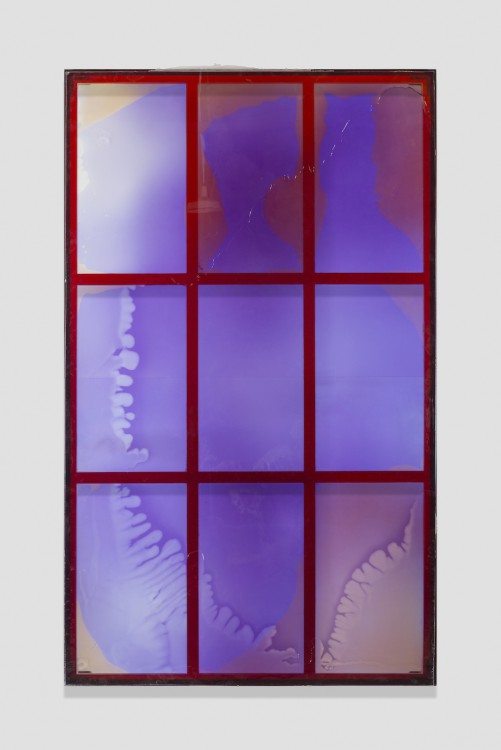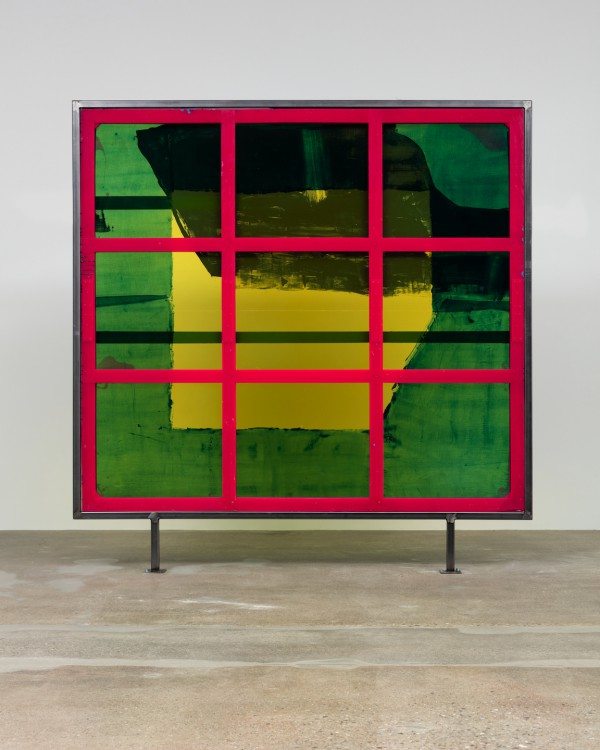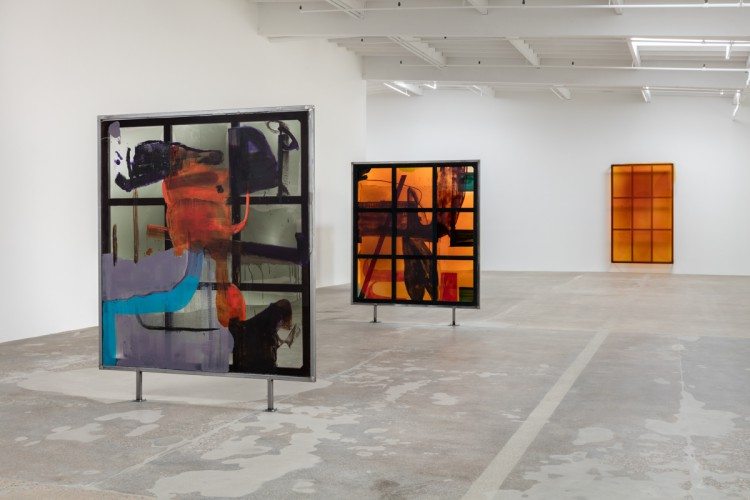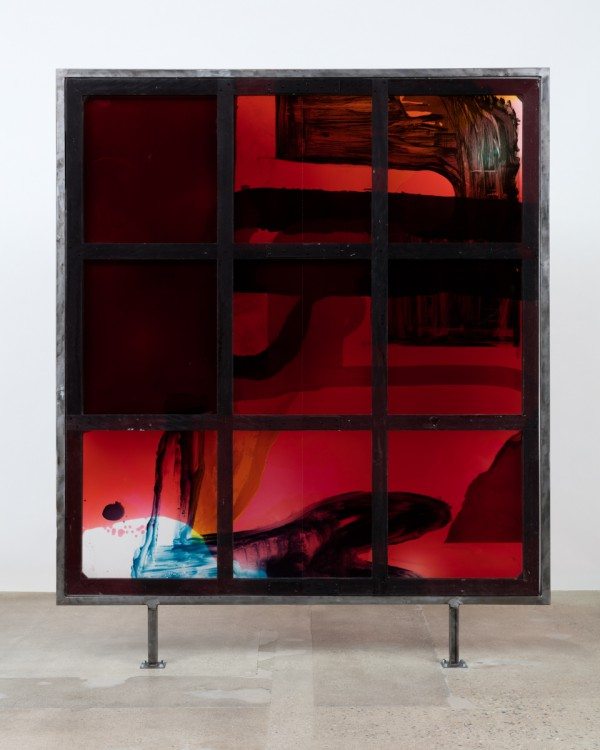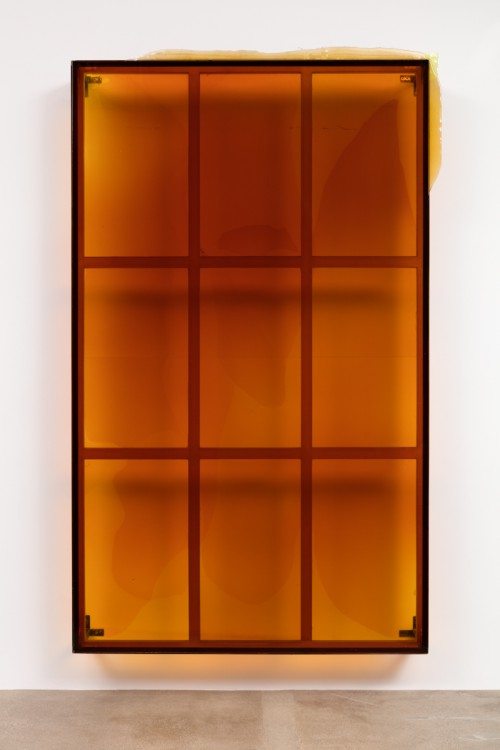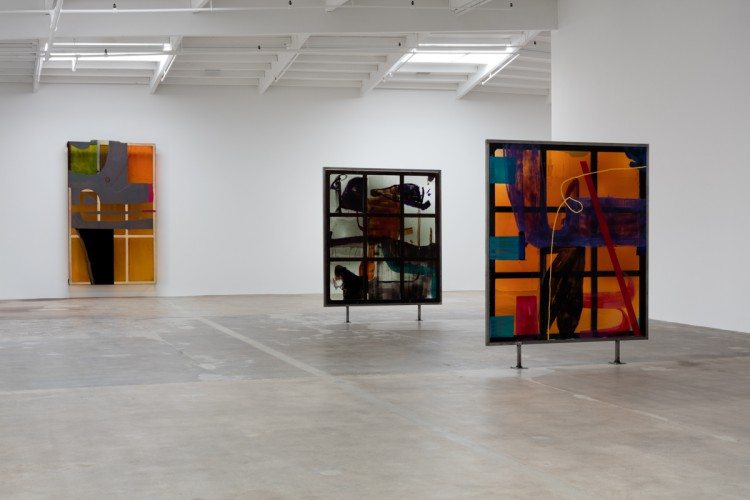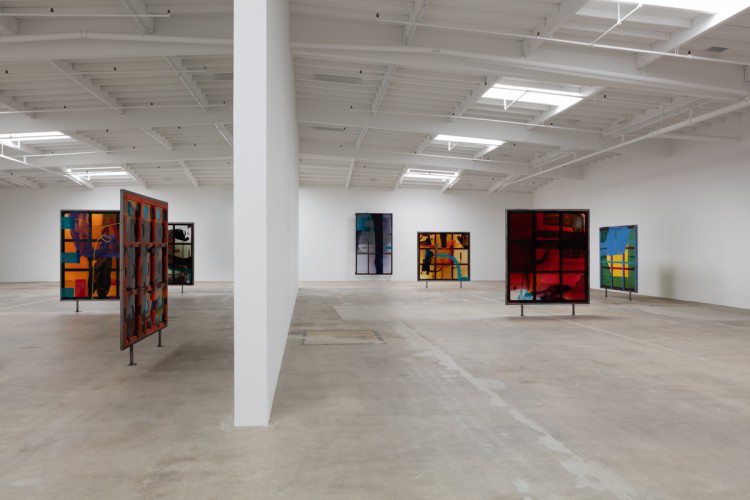Alex Hubbard creates playful, vibrant, abstract sculptures from carefully controlled chemical reactions. For this inaugural exhibition at Los Angeles’ new West Coast Maccarone Gallery, the American artist plays the results of his scientific experiments against the act of painting, to explore the relationship between incidents and deliberation.
Hubbard’s large-scale, three-dimensional chemical moulds in Basic Perversions are a theoretical counterpoint to his previous works. Hubbard’s three-part series The Collapse of the Expanded Field (2007) recorded Hubbard’s artistic process and subsequent destruction on film. A scene from this series sees Hubbard arrange a vase of flowers, then smash it and spray paint it black, concluding by sweeping away the remnants. This is the act of painting as performance. This is seen similarly in the film piece Annotated Plans for an Evacuation (2010), in which Hubbard progressively transforms a car from its three dimensional form into a flattened picture. In this suite of new works, the process of creating and then destroying is not demonstrated so directly. Instead, Hubbard zones in on the nature of incident and deliberation in the act of painting.
Held up by casts of stretcher bars, each stand-alone, translucent mould structure is set upon a visible squared skeleton-like frame. Their brightly-hued vitreous surfaces, and the patterns they form are the result of rapidly drying substances. The results of these chemical reactions — the intensity and graduation of colouring — were incidental. The make up of the moulds rely upon chance and mistake, as much as they do upon laborious pre-production processes. The composition of the free-standing moulds, then, provides a contrast to the application of vibrant opaque oils and auto-body paint to the exteriors of the moulds.
In this application, Hubbard layers neat squares of teal paint, spaced evenly down the left hand side of the mould. A thinner slither of royal blue paint sheaths over the squares, ending neatly halfway down the work. A yellow line grows from the top right edge to the bottom left corner of the painting, playfully looping over itself in the centre of the mould. These fun streaks of colour represent a contrast to the incidental nature of the chemical reaction: putting paintbrush to canvas (or to urethan, resin and fibreglass mould) is a deliberative, thoughtful process.
Both approaches initially seem to strike the viewer as mechanically fabricated and simple. In reality both approaches are subject to laborious deliberation somewhere along the line. He seems to posit that the act of creating and the thought process behind the act are inherently more complex than they are given credit for.
Alex Hubbard: Basic Perversions is showing at LA’s Maccarone until 19 December.
